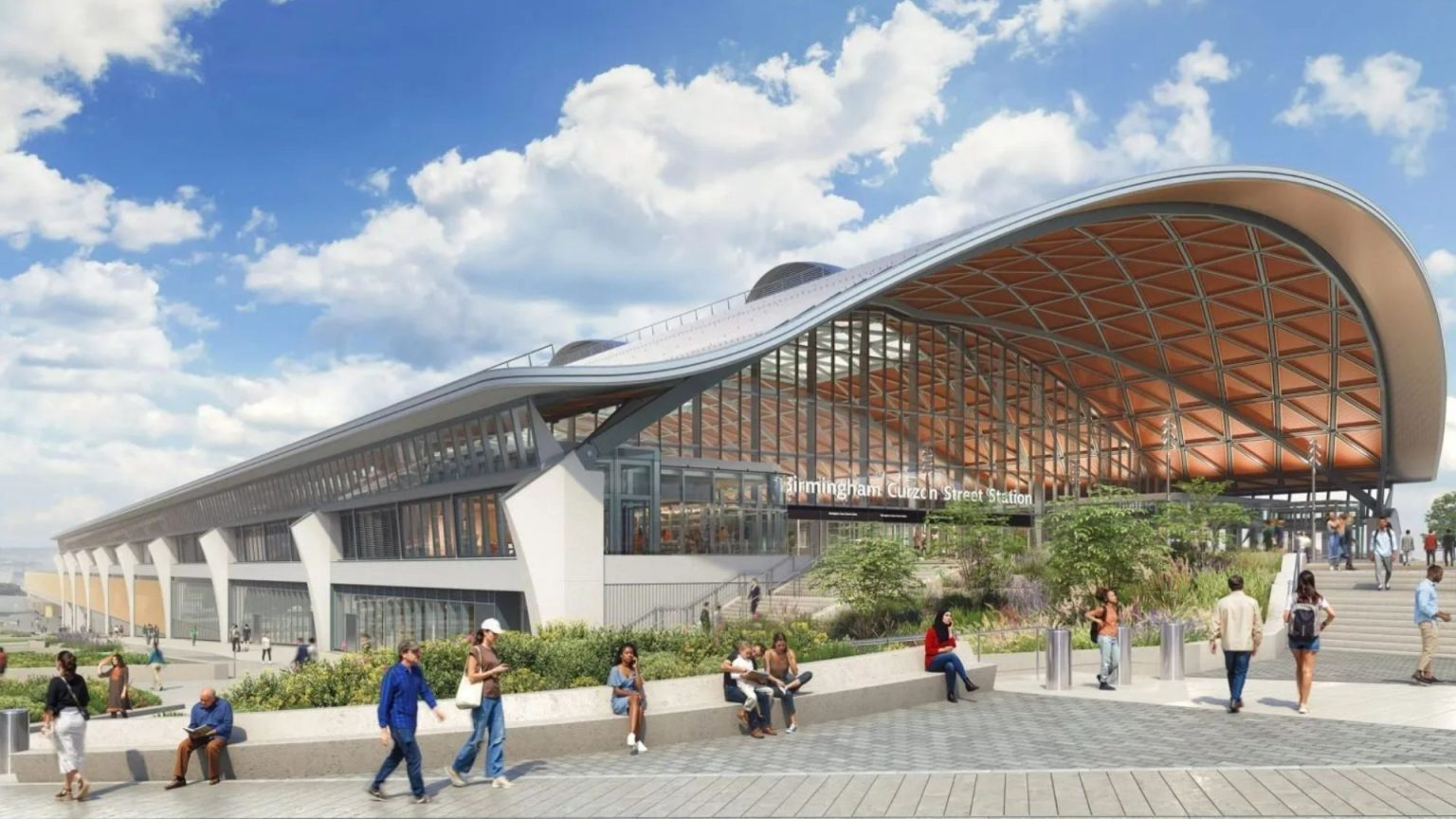Birmingham’s Curzon Street Station, a cornerstone of the HS2 high-speed rail network, is poised to become the first new mainline terminus constructed in a UK city centre in over 130 years. Drawing inspiration from Victorian architectural aesthetics, the station’s design showcases prominent curved roofs while embracing modern functionality with seven platforms. Beyond the station’s walls, four distinct public spaces will offer verdant escapes and areas for community engagement. Station Square, envisioned as the station’s welcoming “front door,” will feature expansive green areas. Curzon Square, a dedicated event space, will host outdoor gatherings. Curzon Promenade will provide pedestrian and cycle paths linking the station to Eastside City Park, while Paternoster Place will offer a blend of urban spaces and pathways. A tram line will further enhance connectivity, running adjacent to and beneath the station.
The latest design iterations for Curzon Street Station incorporate modifications to the roof materials, reflecting an evolving approach since the initial plans were unveiled. Construction commenced in January 2024, with the main station building works slated to begin later this year. An intensive testing phase is scheduled from summer 2026 to autumn 2028, leading up to the anticipated operational launch in the mid-2030s. However, public access may be granted earlier through guided tours of the construction site. Upon completion, the station will significantly reduce travel times, with journeys between London and Birmingham estimated to take just 49 minutes.
Curzon Street Station isn’t the only major rail project underway as part of the HS2 initiative. Old Oak Common, a £2 billion “super station,” is also under construction, aiming to become the most connected station in the UK by 2029. This 14-platform hub will accommodate high-speed trains reaching speeds of 220mph, serving routes including London to Birmingham. The emergence of Old Oak Common, along with Curzon Street Station, underscores the transformative potential of HS2 to reshape the UK’s rail landscape.
HS2, short for High Speed 2, represents the UK’s most ambitious rail investment, particularly in the North of England, and stands as Europe’s largest infrastructure project. This high-speed rail network will connect London with key cities in the Midlands and Northern England, utilizing specially designed trains capable of reaching 225mph. The primary objectives are to drastically reduce journey times and enhance connectivity across the country. While the original plan included a leg between Birmingham and Manchester, this section was subsequently cancelled. Despite concerns about potential route alterations, the current focus remains on connecting HS2 to Euston station in London.
The evolution of high-speed rail in the UK traces back to HS1, which launched in 2003, linking London to mainland Europe. Subsequent proposals included HS3, envisioned to connect Liverpool and Warrington, and HS4, a conceptual route aiming to link London Gatwick, London Heathrow, and Manston Airport. These projects highlight the ongoing ambition to expand and modernize the UK’s rail infrastructure.
Beyond HS2, other significant rail developments are underway across the UK. The country’s busiest train station is undergoing a major redevelopment, while an emerging city is embarking on a £21 billion revamp of its own rail hub. These projects, alongside HS2 and its associated stations like Curzon Street and Old Oak Common, signify a concerted effort to upgrade the UK’s rail network for the 21st century, promising improved connectivity, reduced travel times, and enhanced passenger experiences.


